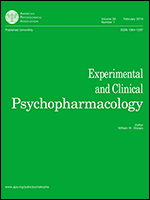“Inflammatory bowel diseases (IBDs) include Crohn’s disease, and ulcerative colitis. Cannabis sativa preparations have beneficial effects for IBD patients. However, C. sativa extracts contain hundreds of compounds. Although there is much knowledge of the activity of different cannabinoids and their receptor agonists or antagonists, the cytotoxic and anti-inflammatory activity of whole C. sativa extracts has never been characterized in detail with in vitro and ex vivo colon models.
Material and Methods: The anti-inflammatory activity of C. sativa extracts was studied on three lines of epithelial cells and on colon tissue. C. sativa flowers were extracted with ethanol, enzyme-linked immunosorbent assay was used to determine the level of interleukin-8 in colon cells and tissue biopsies, chemical analysis was performed using high-performance liquid chromatography, mass spectrometry and nuclear magnetic resonance and gene expression was determined by quantitative real-time PCR.
Results: The anti-inflammatory activity of Cannabis extracts derives from D9-tetrahydrocannabinolic acid (THCA) present in fraction 7 (F7) of the extract. However, all fractions of C. sativa at a certain combination of concentrations have a significant increased cytotoxic activity. GPR55 receptor antagonist significantly reduces the anti-inflammatory activity of F7, whereas cannabinoid type 2 receptor antagonist significantly increases HCT116 cell proliferation. Also, cannabidiol (CBD) shows dose dependent cytotoxic activity, whereas anti-inflammatory activity was found only for the low concentration of CBD, and in a bell-shaped rather than dose-dependent manner. Activity of the extract and active fraction was verified on colon tissues taken from IBD patients, and was shown to suppress cyclooxygenase-2 (COX2) and metalloproteinase-9 (MMP9) gene expression in both cell culture and colon tissue.
Conclusions: It is suggested that the anti-inflammatory activity of Cannabis extracts on colon epithelial cells derives from a fraction of the extract that contains THCA, and is mediated, at least partially, via GPR55 receptor. The cytotoxic activity of the C. sativa extract was increased by combining all fractions at a certain combination of concentrations and was partially affected by CB2 receptor antagonist that increased cell proliferation. It is suggested that in a nonpsychoactive treatment for IBD, THCA should be used rather than CBD.”










